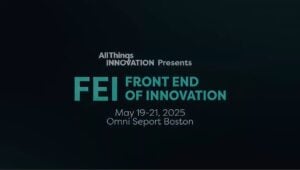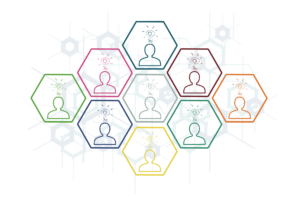Thoughts on Innovation Leadership
For entry level innovation professionals, it’s important to stay focused on the customer and the problem at hand. But diversity and discernment also play a role in innovation, regardless of how many years of established experience you might have.
Leslie Grandy, Lead Executive in Residence, University of Washington – Michael G. Foster School of Business; and author, Creative Velocity: Propelling Breakthrough Ideas in the Age of Generative AI, shares some of her top strategies for those just starting out:
- Fall in love with your customers and their problems, not the solution. “Stay open to solutions in unexpected places and remain curious about potentially better solutions than the one you first defined,” advises Grandy. “Remember that how a problem is defined is essential to finding an impactful and valuable solution. You need to understand the problems thoroughly to ensure you are solving a problem and not merely addressing a symptom of the problem. True innovation stems from a deep understanding of customer problems.”
- Diversity in innovation has many advantages. Grandy adds, “Seeking diverse perspectives promotes a growth mindset, which encourages questioning the status quo. Fresh perspectives can stimulate innovative thinking by challenging how things work today and introducing novel pathways to solutions. Someone open to diverse inputs is better equipped to anticipate shifts in consumer trends and adapt to changes in the market. This agility results from leveraging the collective experiences of customers and colleagues and a willingness to evolve one’s perspectives in the face of new inputs. Thus, diversity promotes forward-thinking and adaptability, which is critical in being an inspiring, innovative leader.”
- Embrace risk-taking and failure as integral to the process. “Instead of being discouraged by unsuccessful experiments, actively seek valuable lessons from them,” says Grandy. “Viewing failure as a learning opportunity enables you to approach future iterations with renewed energy and maintain creative momentum. Consider failure an anticipated aspect of the process and learn from it, iterating and evolving ideas as more significant insights emerge.”
- Maintain equanimity and demonstrate discernment. “Stay balanced in your reactions to inputs and insights and avoid letting emotion cloud your judgment. Equanimity helps you stay composed, and discernment ensures that your decisions stem from thoughtfulness rather than impulsivity or reactivity,” notes Grandy. “Together, they form a framework for responding to the world from a place of curiosity and open-mindedness, which are essential to achieving creative velocity.”
Staying Curious
In addition to themes such as engagement and communication, for food and beverage innovation veteran Zeinab Ali, who recently retired after a career in senior research and development roles with brands like Campbell Soup Company, PepsiCo and Nabisco, it really is about individual relationships, cross collaboration and partnership building.
“I think listening to the people before you, listen and learn what worked, what did not work, and be curious,” says Ali. “Ask why. Why did it not work? What happened? Why did it work this time? Absorb it all.”
Ali likens the curiosity needed for this role to the way children express themselves: “Children are the most creative and innovative in their thoughts. Because they have no fear of failure. They don’t have self-doubt yet, and they ask questions,” observes Ali. “Just learn from the kids. Ask questions. Don’t have a fear of failure. Innovation will follow. We lose this sense as we get older. But if you can just put this in a capsule, how they think and how they ask questions, and then you recreate that as an adult. Be mindful that you’re recreating. It’s going to be painful to be in that state because you’re not a kid anymore, but try as much as possible. Keep asking why.”
Ali adds, “It also goes back to that stakeholder relationship and seeing the need of that front end of innovation together. Having that conversation and cultivating that relationship with your partner, whether it be your partner is R&D or another part of the business, discuss it together. You may be seeing stuff that’s not there and be OK with that and accept it. It must be real openness. Sometimes that might be from leadership. But be open to saying, this is what I heard, can we look at it together?”
Part of innovation, Ali agrees, is the risk of failure. But turn that into a learning process.
“We’ve done innovations that failed six months into the market,” relates Ali. “Learn from it. You collect information. Let the consumer enlighten you. Develop organizational thinking and learn from it.”
Be a Problem Solver
Like Ali, Lisa Costello, Director and Head of Platform, Prologis Ventures, agrees that communication is key, whether you are a business innovation novice or expert. And like Grandy, Costello also sees how becoming a problem solver can make your ideas more valuable to the company. Alignment to company goals is also a beneficial trait.
“Try to tie your ideas or the problem back to the core outcomes of the business,” says Costello. “For example, if you have a new idea for a product or process, but you don’t know if you’re going to be able to convince your management or leadership, tie it back to strategic priorities of the business. You’re going to have a much easier time pushing through your ideas.”
Costello provides a pertinent example: “We work in the warehouse industry, and we are trying to sell real estate to our customers. You are an individual who’s trying to pitch a new tech solution, let’s say AI cameras for security, because you think it’s the best thing on the market. If you go into your manager’s office and say, I want to pitch this new solution because I think it’s the best, they may ask, why do I need to look at this? I’m too busy. Instead, if you start by saying that you have an idea for how to retain customers, you’re communicating it from the core goals of the business, then you’re going in with a much stronger pitch.”
“It’s not about the AI security camera,” adds Costello, “it’s about how you create a safe space for the customer. If the space is more secure, that means that they’re more likely to continue to lease the property from you. What you’re really pitching to your manager is how you think you can solve for vacancy. You’re going back to the core problem, and yes, the AI security camera solution you discovered could make an impact.”
“It’s about how you communicate your idea. You need to start with a core problem that your company is trying to solve for and why your idea is going to help fix the problem,” says Costello.
Find Innovation’s Human Driver
Like Zeinab Ali, Emil Georgiev, Vice President – Customer Experience Design, IKS Health, goes back to a key time in childhood—when curiosity is such a driver of expressing oneself. It’s really, in essence, a mantra designed to keep the innovation practitioner staying curious. It’s actually easier said than done, adds Georgiev, who has held many innovation workshops throughout his career.
“I think curiosity—never squash this inner child that asks why, why, why,” says Georgiev. “That was one of the biggest pieces of advice that we have. I can attest that, for our design thinking workshops, very often we have to spend time resetting the mindset of the participants so that they can be more open to innovation. This very often involves letting go of things that you have learned and the approaches that you have always used, and be open, and maybe even in some cases, put aside the notion of disbelief for a moment. Curiosity on a personal level, this is probably one of the biggest pieces of advice that I would make to any starting practitioner in the innovation field.”
He adds, “The methodology of design thinking by itself is very useful, especially when it comes down to translational innovation because there are always opportunities for translation or innovation. There is a whole methodology called TRIZ that postulates that the problem you’re trying to solve, somebody out there in the world chances are may have solved it already, and you just have to find this answer. Same philosophy in some of the design thinking workshops. It is the same philosophy for translational innovation that happens with design thinking.”
Still, when you get down to the granular level, it’s still very much about the human consumer and their needs.
Georgiev continues, “The other thing that really drives innovation is innovation doesn’t happen for innovation’s sake. Innovation typically happens because a group of people somewhere has a need that nobody has addressed. Maybe even they don’t realize that they have that need. If you take it even a step further, it is also tied to human beings in some way, shape, or form. That’s when it becomes innovation. Otherwise, It may not have any practical application. There may be something developed that’s a novelty, but it’s not an innovation. You wouldn’t patent something that doesn’t do anything. It might advance science, but it’s not an innovation.”
“This must go down to the definition of what innovation is—it has to be useful for people,” says Georgiev. “Very often the inspiration for innovation development is to understand people, understand their needs, and most importantly the unmet needs of those people. That’s a huge innovation driver.”
Video courtesy of Pd-m International
Contributor
-

Matthew Kramer is the Digital Editor for All Things Insights & All Things Innovation. He has over 20 years of experience working in publishing and media companies, on a variety of business-to-business publications, websites and trade shows.
View all posts




































































































































































